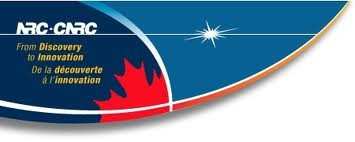Tue, Jun 18, 2013
Research On Widespread Fatigue Damage Assessment On Curved Fuselage Section
The National Research Council of Canada (NRC) has signed a two-year collaborative research agreement with the Japan Aerospace Exploration Agency (JAXA) to carry out a widespread fatigue damage (WFD) assessment for the JAXA ‘curved fuselage’ panel tests. The WFD assessments include fatigue life estimation on crack formation and/or fatigue damage onset, and multiple fatigue damage crack growth analysis to the first link-up with two neighbouring cracks. Also included is the calibration and validation of NRC tools for WFD evaluation of existing and new aircraft design.

The studied curved panel is a section of a pressurized fuselage consisting of all stringers, frames, shear ties and skins. The curved panel test is a cost-effective way to study WFD of aircraft fuselages.
Recently, the NRC widespread fatigue damage assessment tools were successfully applied to assess aircraft service life related to multiple fatigue damage and widespread fatigue damage for the Royal Canadian Air Force transport airplanes,” said Jerzy Komorowski, general manager of NRC Aerospace. “NRC’s research progress and expertise on in-service applications will assist JAXA’s effort on evaluation of widespread fatigue damage on fuselage panels.”
Widespread fatigue damage (WFD) in a structure is characterized by the simultaneous presence of cracks at multiple points, that are of sufficient size and density such that the structure will no longer meet its damage tolerance requirement and could fail. Two categories of WFD are multi-site damage (MSD), the simultaneous presence of fatigue cracks in the same structural element; and multi-element damage (MED), the simultaneous presence of fatigue cracks in similar adjacent structural elements.

NRC has carried out extensive research on WFD assessment including WFD tool development. A series of structural integrity assessment tools have also been developed for durability and damage tolerance analysis for various aircraft critical locations containing WFD.
The NRC methods include the crack formation life analysis techniques, MSD stress intensity factor library, crack growth program with MSD/MED, global-local finite element based residual strength analysis techniques, and Monte Carlo simulation programs to determine the lifetime distribution for the WFD onset and the probability of failure.
More News
From 2023 (YouTube Edition): An Even Faster Rolling Extra! Jim Campbell joined General Manager of Extra Aircraft Duncan Koerbel at AirVenture 2023 to talk about what’s up and>[...]
“Receiving our Permit to Fly and starting Phase 4 marks a defining moment for Vertical Aerospace. Our team has spent months verifying every core system under close regulatory>[...]
Middle Marker A marker beacon that defines a point along the glideslope of an ILS normally located at or near the point of decision height (ILS Category I). It is keyed to transmit>[...]
The Experienced Pilot Chose To Operate In Instrument Meteorological Conditions Without An Instrument Flight Rules Clearance Analysis: The airplane was operated on a personal cross->[...]
Also: ATI Strike Prep, Spirit Still Troubled, New CubCrafters Dealership, A-29 Super Tucano Samaritan’s Purse is officially moving its historic Douglas DC-8 cargo jet into re>[...]
 Classic Aero-TV: Extra Aircraft Announces the Extra 330SX
Classic Aero-TV: Extra Aircraft Announces the Extra 330SX Aero-News: Quote of the Day (11.15.25)
Aero-News: Quote of the Day (11.15.25) ANN's Daily Aero-Term (11.15.25): Middle Marker
ANN's Daily Aero-Term (11.15.25): Middle Marker NTSB Final Report: Lancair 320
NTSB Final Report: Lancair 320 Airborne 11.14.25: Last DC-8 Retires, Boeing Recovery, Teeny Trig TXP
Airborne 11.14.25: Last DC-8 Retires, Boeing Recovery, Teeny Trig TXP




